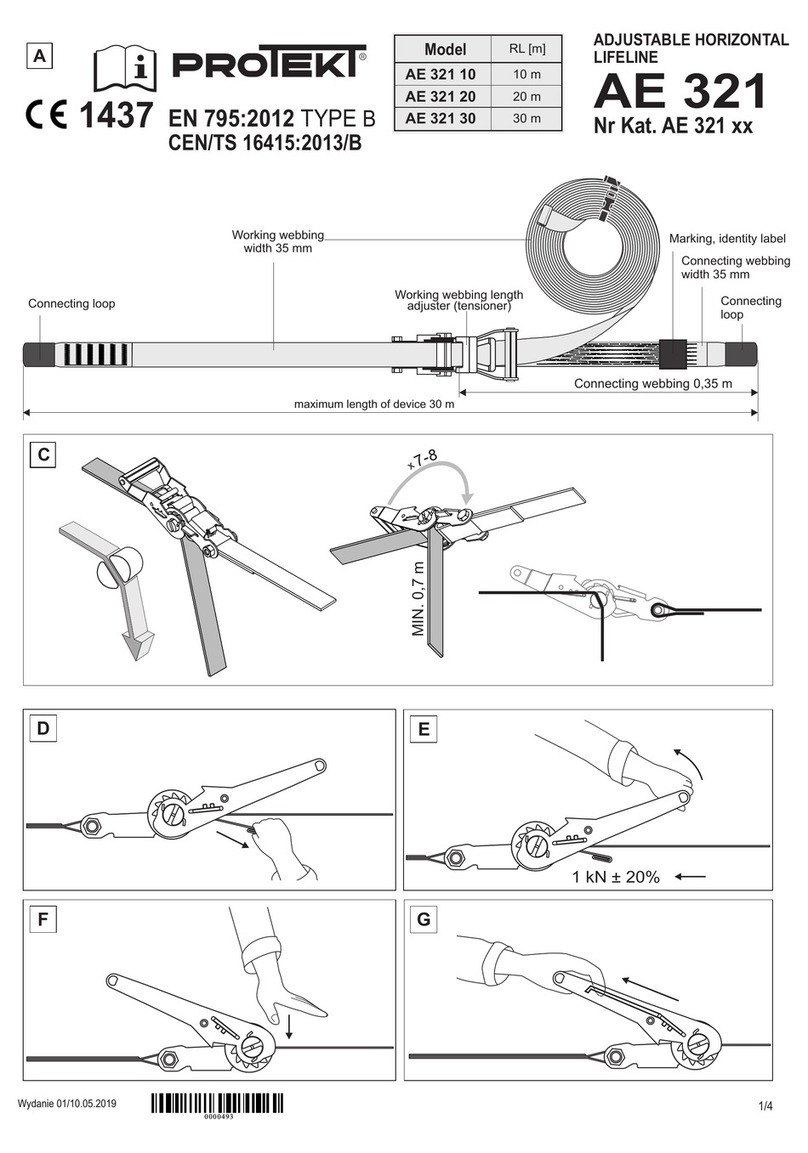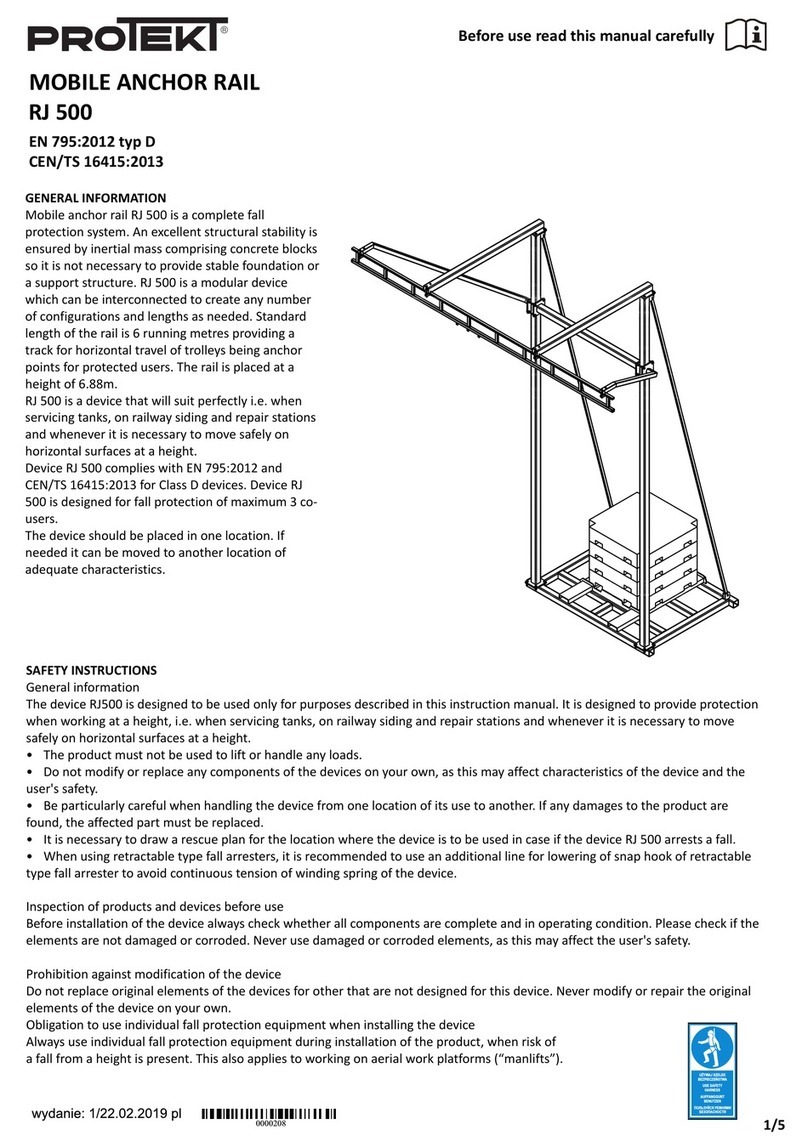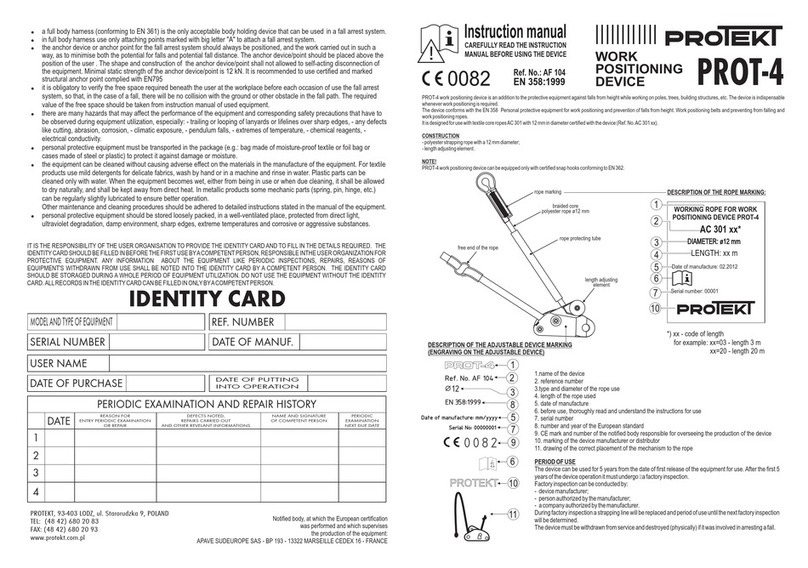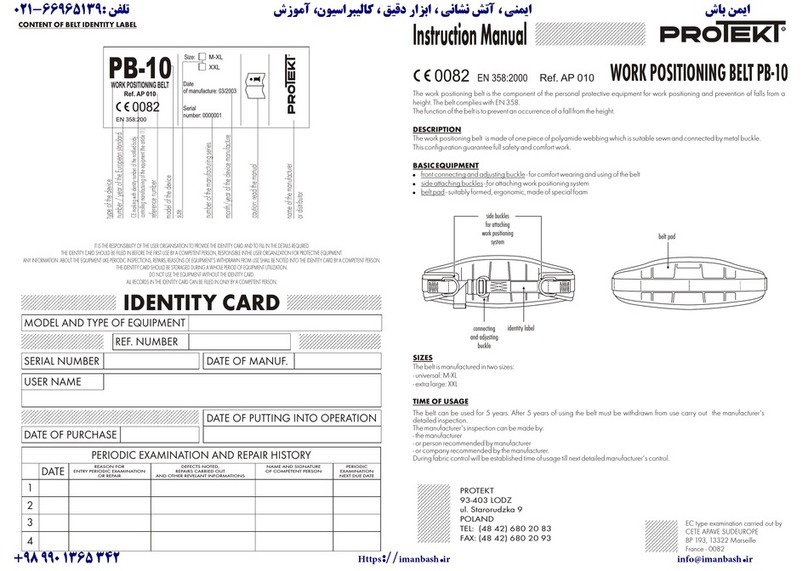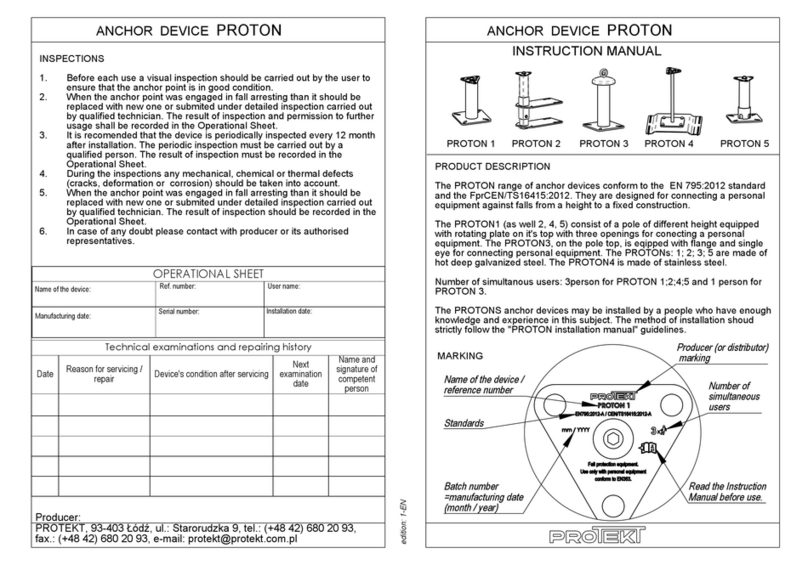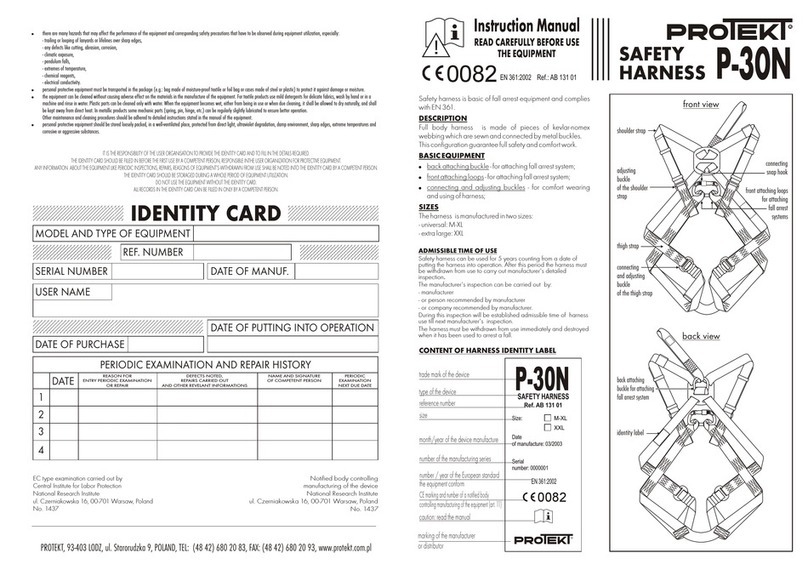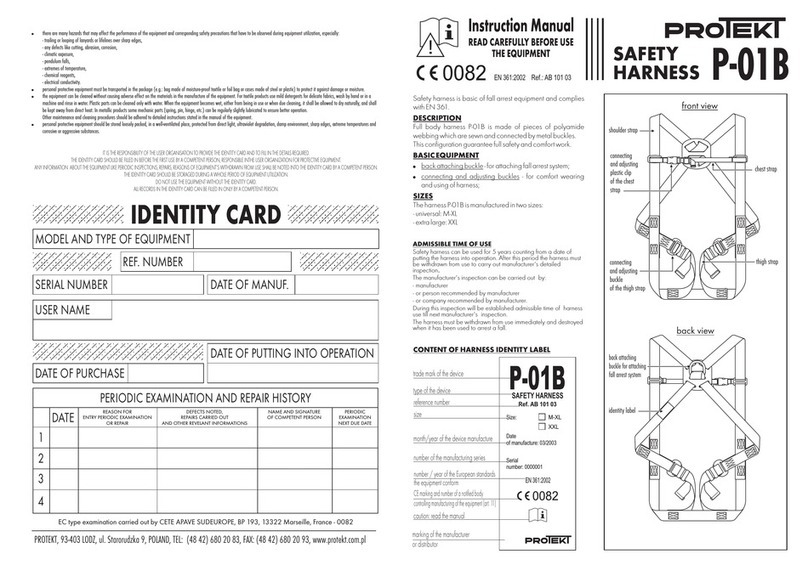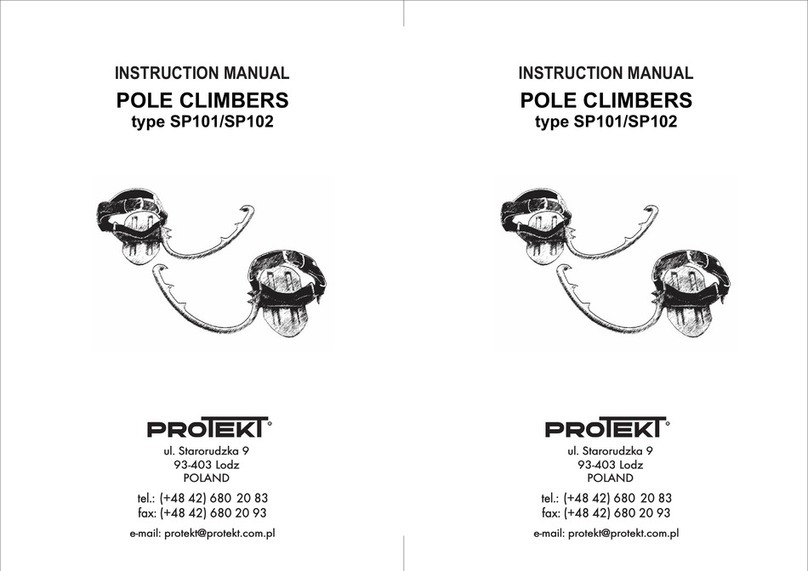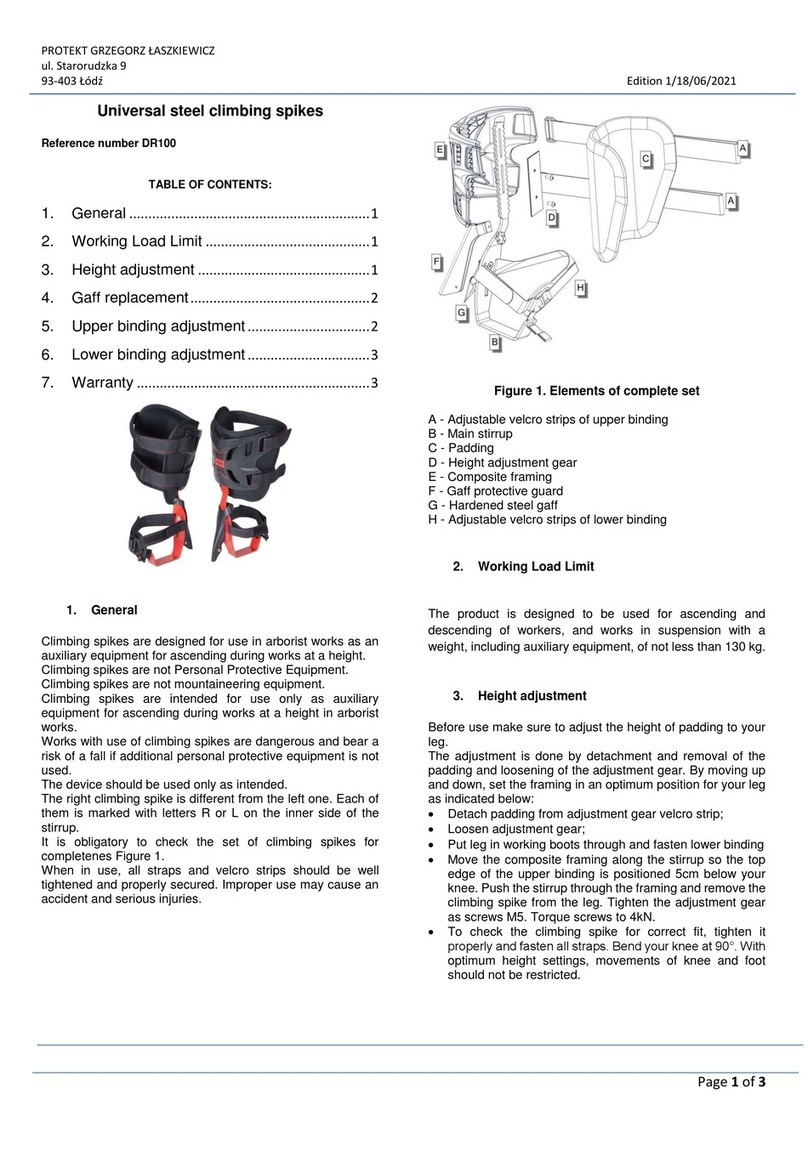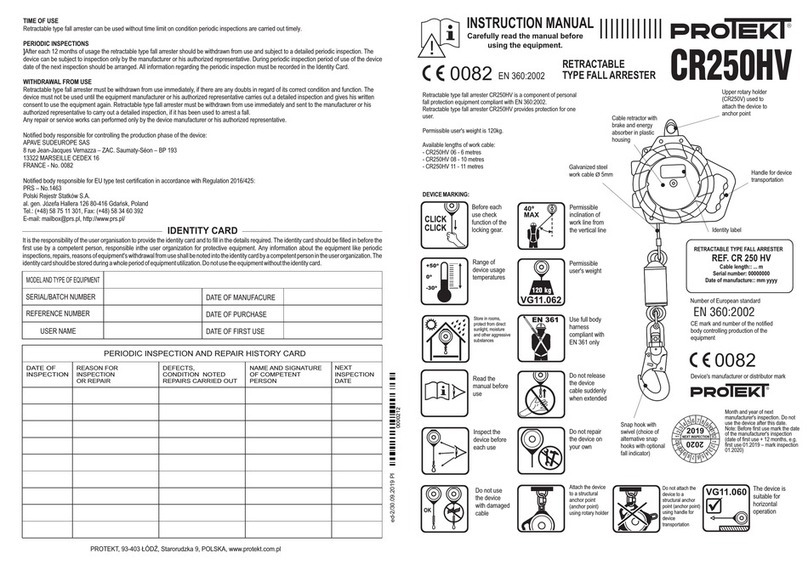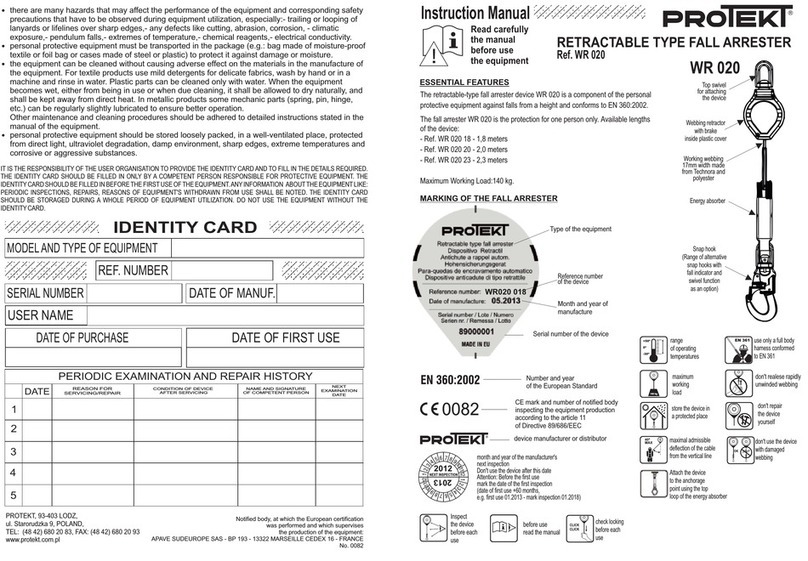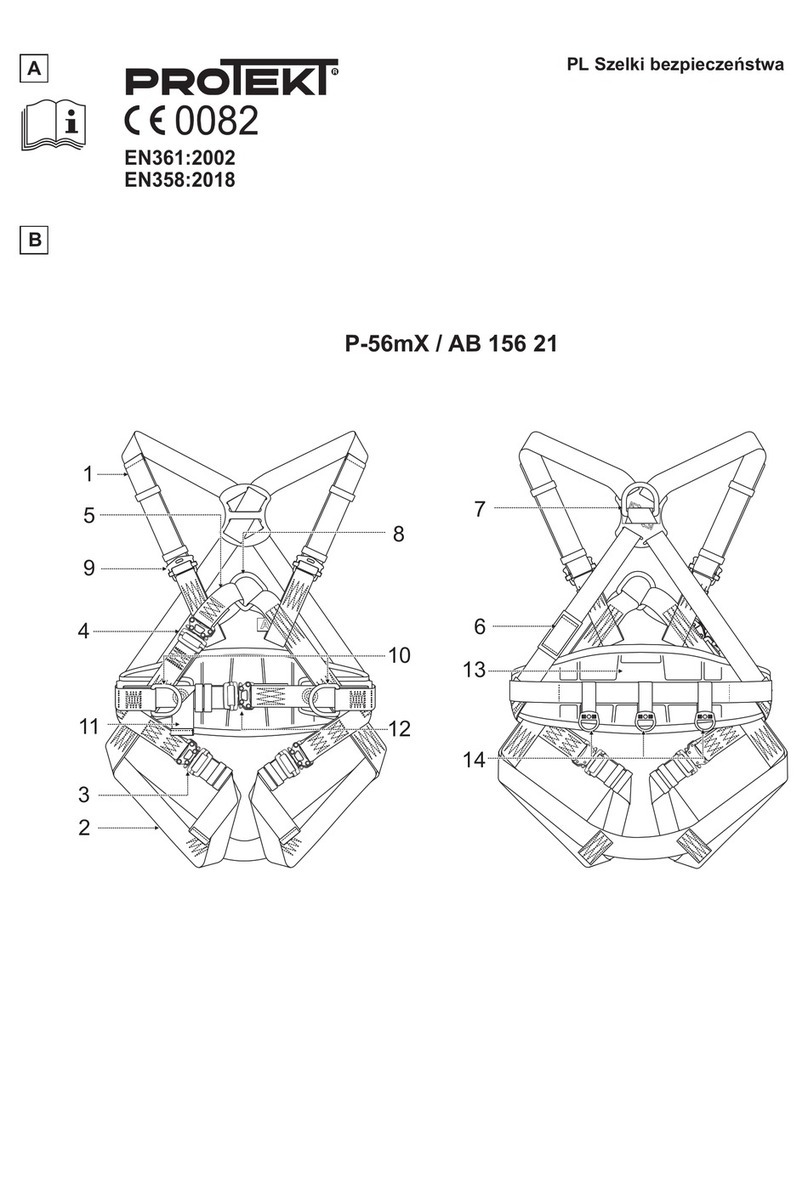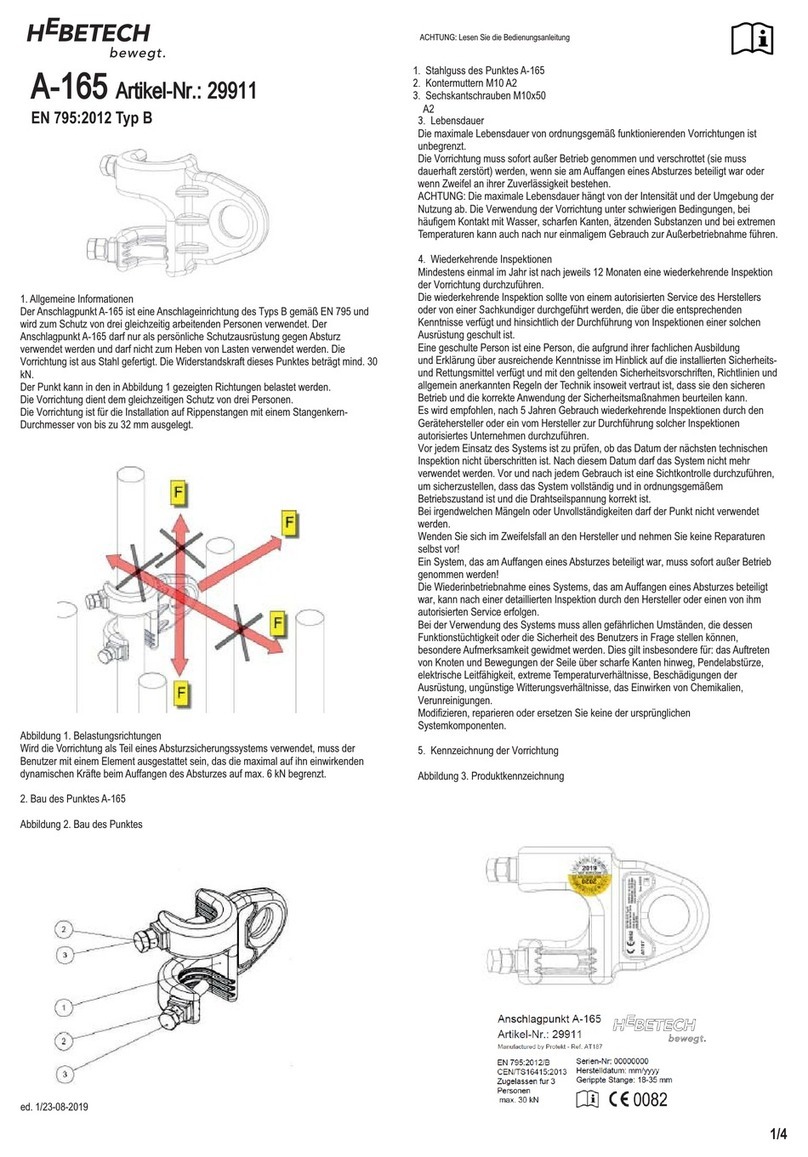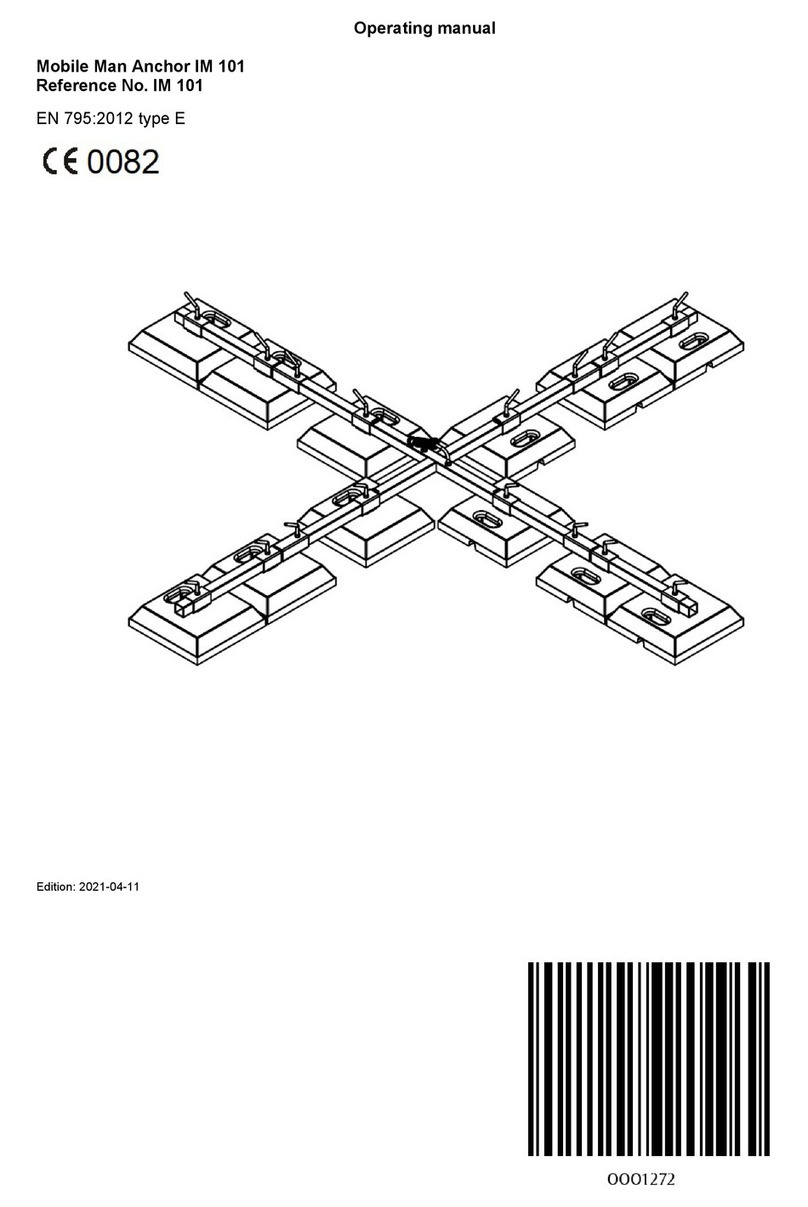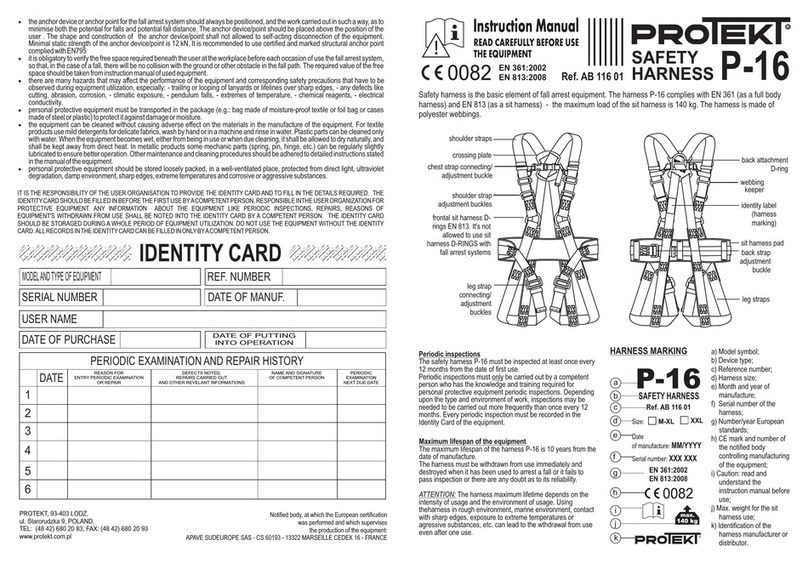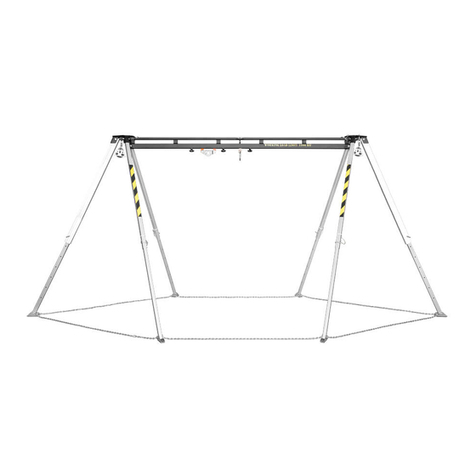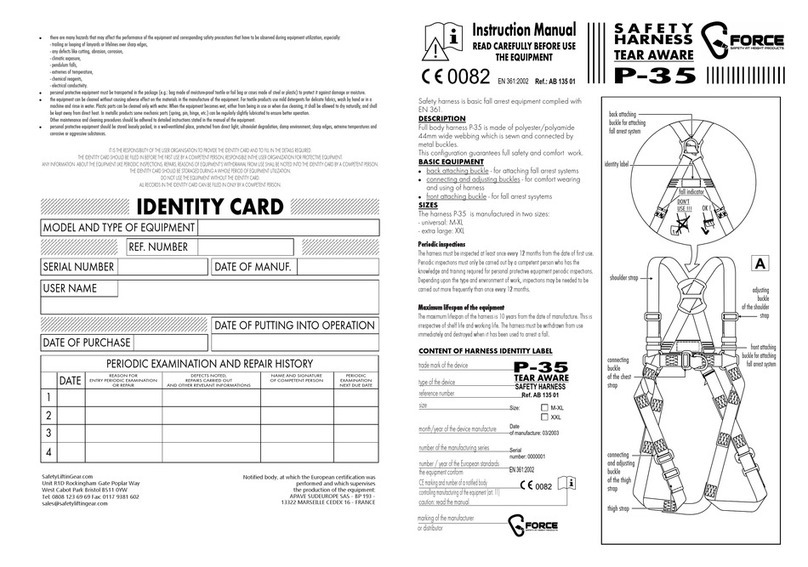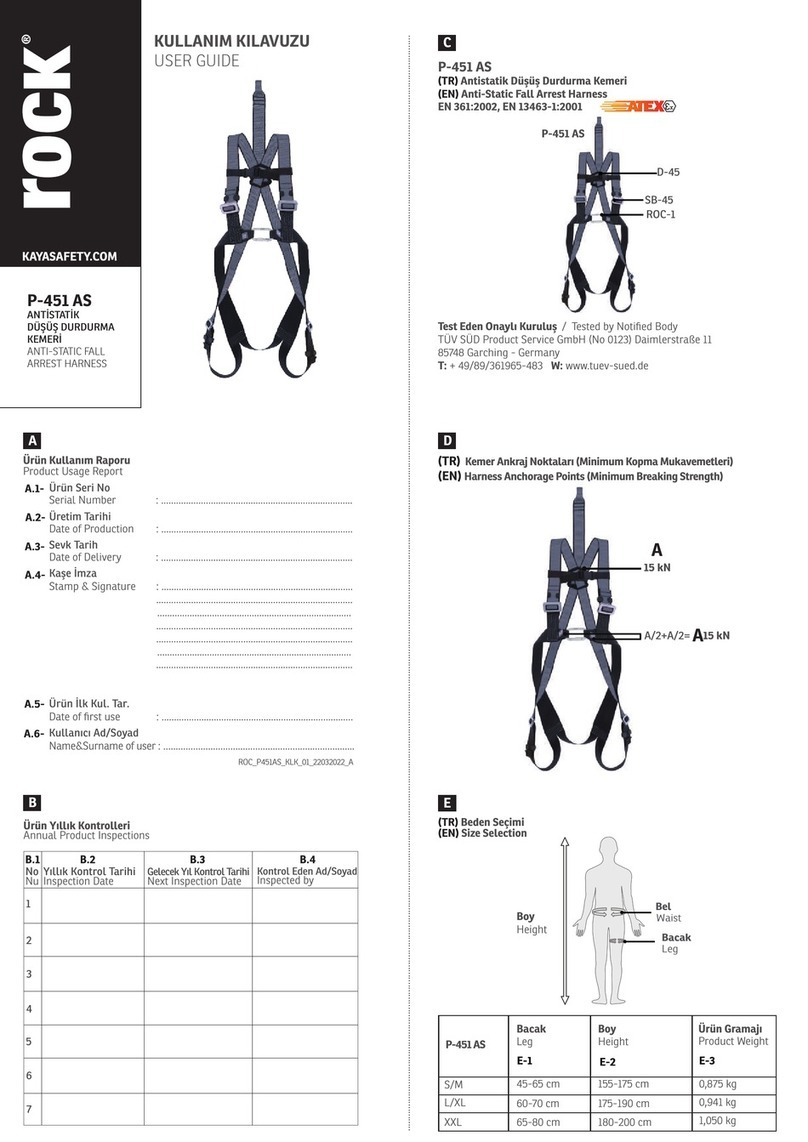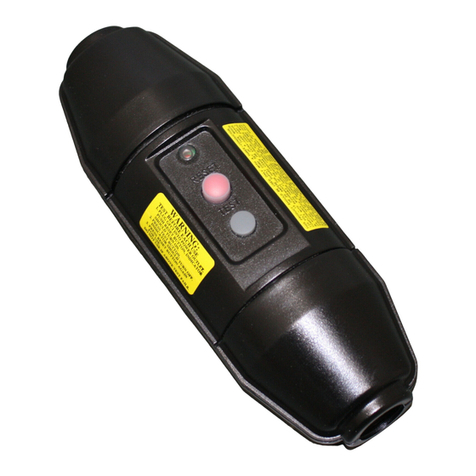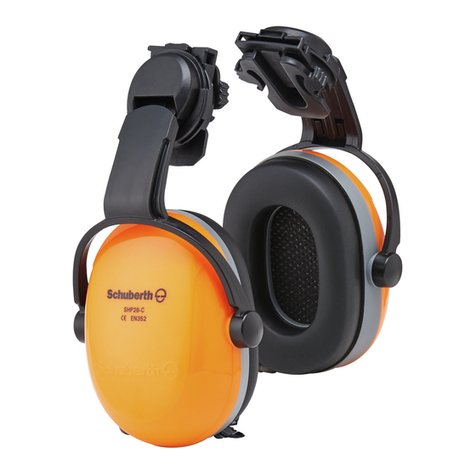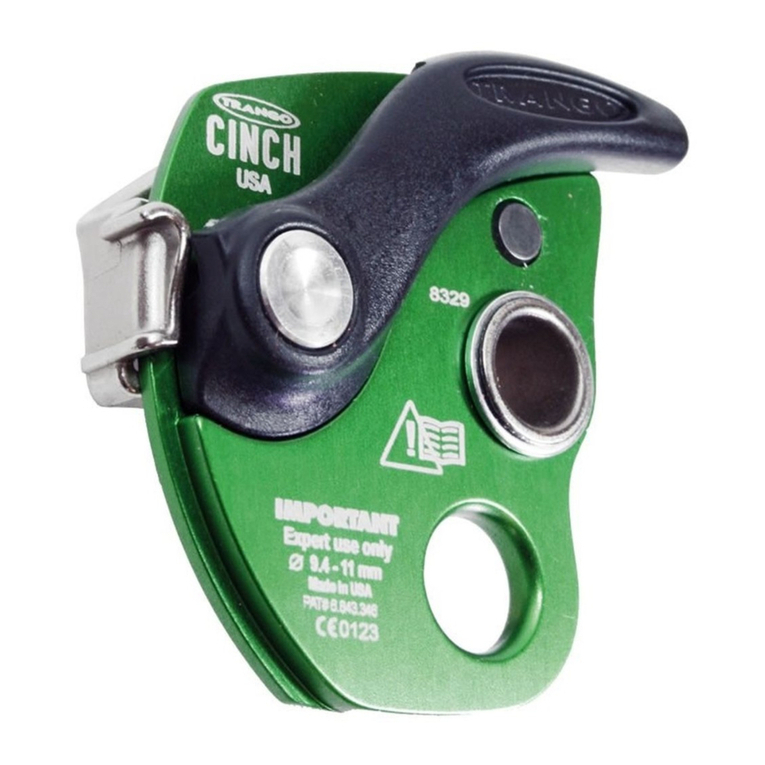
ATTACHINGANCHOR DEVICEAT191
AB
CDE
ATTENTION:
Anchror device
AT191 shall not be
used alone as a fall
arrest device.
The structural anchor
point should be situated
above the working
place and the shape of
the structural anchor
point should not let self-
acting disconection of
the lanyard. Minimal
static strength of
structural anchor point
shall be 30 kN.
X
Attention!
always work with a locked
connector protected by
tightening up a nut
LINAROBOCZA
USPBLOCMAX-RORIP
*personal protective equipment shall only be used by a person trained and competent in its safe use.
*
emergency use.
*a rescue plan shall be in place to deal with any emergencies that could arise during the work.
*it is forbidden to make any alterations or additions to the equipment without the manufacturer's prior written consent.
*any repair shall only be carried out by equipment manufacturer or his certified representative.
*personal protective equipment shall not be used outside its limitations, or for any purpose other than that for which it is intended.
*personal protective equipment should be a personal issue item.
*before use ensure about the compatibility of items of equipment assembled into a fall arrest system. Periodically check connecting and adjusting of the
equipment components to avoid accidental loosening or disconnecting of the components.
*it is forbidden to use combinations of items of equipment in which the safe function of any one item is affected by or interferes with the safe function of
another.
*before each use of personal protective equipment it is obligatory to carry out a pre-use check of the equipment, to ensure that it is in a serviceable condition
and operates correctly before it is used.
*during pre-use check it is necessary to inspect all elements of the equipment in respect of any damages, excessive wear, corrosion, abrasion, cutting or
incorrect acting, especially take into consideration:
- in full body harnesses and belts - buckles, adjusting elements, attaching points, webbings, seams, loops;
- in energy absorbers - attaching loops, webbing, seams, casing, connectors;
- in textile lanyards or lifelines or guidelines - rope, loops, thimbles, connectors, adjusting element, splices;
- in steel lanyards or lifelines or guidelines - cable, wires, clips, ferrules, loops, thimbles, connectors, adjusting elements;
- in retractable fall arresters - cable or webbing, retractor and brake proper acting, casing, energy absorber, connector;
- in guided type fall arresters - body of the fall arrester, sliding function, locking gear acting, rivets and screws, connector, energy absorber;
- in connectors - main body, rivets, gate, locking gear acting.
*after every12 months of utilization, personal protective equipment must be withdrawn from use to carry out periodical detailed inspection. The periodic
inspection must be carried out by
a competent person for periodic inspection. The periodic inspection can be carried out also by the manufacturer or his authorized representative.
*In case of some types of the complex equipment e.g. some types of retractable fall arresters the annual inspection can be carried out only by the
manufacturer or his authorized representative.
*regular periodic inspections are the essential for equipment maintenance and the safety of the users which depends upon the continued efficiency and
durability of the equipment.
*during periodic inspection it is necessary to check the legibility of the equipment marking.
*it is essential for the safety of the user that if the product is re-sold outside the original country of destination the reseller shall provide instructions for use, for
maintenance, for periodic examination and for repair in language of the country in which the product is to be used.
*personal protective equipment must be withdrawn from use immediately when any doubt arise about its condition for safe use and not used again until
confirmed in writing by equipment manufacturer or his representative after carried out the detailed inspection.
*personal protective equipment must be withdrawn from use immediately and destroyed when it have been used to arrest a fall.
,
*a full body harness (conformed to EN 361) is the only acceptable body holding device that can be used in a fall arrest system.
*in full body harness use only attaching points marked with big letter "A" to attach a fall arrest system. Marking like "A/2'" or a half of "A" means the
necessity of attaching a fall arrest system to both attaching points together simultaneously. It is strictly forbidden to attach a fall arrest system to the single
attaching point marked "A/2'" or a half of "A". See drawings below:
personal protective equipment must not be used by a person with medical condition that could affect the safety of the equipment user in normal and
THE ESSENTIAL PRINCIPLES FOR USERS OF PERSONAL PROTECTIVE EQUIPMENT AGAINST FALLS FROM A HEIGHT
A
FALL ARREST SYSTEM HARNESS ATTACHING POINT
AHARNESS ATTACHING HALF POINTS
FALL ARREST SYSTEM
FORBIDDEN!
Structural
Anchor
Point
min. 30 kN
Structural
Anchor Point
min. 30 kN
position
of fall arrest
device
level
of attachment
point of
a harness
Structural
Anchor Point
min. 30 kN
position
of fall arrest
device
level
of attachment
point of
a harness
INCORRECT
CORRECT
Put anchor device AT191 around a construction element (structural
anchor point).
ATTENTION: The minimal radius of the construction element must
be 3 mm without sharp edges - drawing A
.It is allowed to put a anchor device AT191 around the construction
element few times to shorten the length of a lanyard - drawing B
Connect a fall arrest device (e.g. retractable type fall arrester, guided
type fall arrester etc.) to the rope's snap hook - drawing C
It must be taken into consideration that during using connecting rope
an additional distance "X" appears between structural anchor
point to which the lanyard is connected and fall arrest device -
drawing D
This distance may influence functioning of fall arrest device, its
position, and fall arrest distance. All calculations concerning
safety of working place, fall arrest distance, free distance below
working level must take into account this additional distance. The
fall arrest device must be situated above the level of attachement
point of a harness to which is connected. It is strictly forbidden to
connect fall arrest device that its position is below a level of
harness attachment point - drawing E
The deflection point does not exceed 5 mm.
Check clearance beneath the user!!!
connecting
lanyard
AT191
*
potential for falls and potential fall distance. The anchor device/point should be placed above the position of the user . The shape and construction of the
anchor device/point shall not allowed to self-acting disconnection of the equipment. Minimal static strength of the anchor device/point is 30 kN. It is
recommended to use certified and marked structural anchor point complied with EN795.
*it is obligatory to verify the free space required beneath the user at the workplace before each occasion of use the fall arrest system, so that, in the case
of a fall, there will be no collision with the ground or other obstacle in the fall path. The required value of the free space should be taken from instruction
manual of used equipment.
the anchor device or anchor point for the fall arrest system should always be positioned, and the work carried out in such a way, as to minimise both the
OK !
FORBIDDEN!
BASIC PRINCIPLES OF USE
1. Before installing the anchor point, read this manual and strictly adhere to its recommendations.
2. This manual must always be available for the installer or operator of the anchor point.
3. The anchor point can be installed only by persons with appropriate knowledge and experience in this field, in particular the knowledge of the EN795
standard, the knowledge of anchor installation in accordance with the guidelines of their manufacturers and the knowledge of this manual. The installed
anchor point must be checked (approved) by a person competent in this area (e.g. an engineer or a qualified designer), who must also check the
construction the building at the attachment point in terms of its strength.
4. The constructor of the anchor point is entirely responsible for its installation. Neither the manufacturer nor the distributor is responsible for careless or
inconsistent with the recommendations assembly. Upon request, the manufacturer and/or distributor provide all necessary technical information
concerning the product, its assembly technology, inspection and the product's declaration of conformity.
5. The personal protective equipment used with the anchor point must be attached using a connector compliant with EN362, taking into account the
recommendations contained in the instructions for use of this equipment.
6. AT191 must only be used for the attachment of personal protective equipment against falls from a height, in accordance with EN795 type B , in such a
way that the created protective system complies with EN363 standards.
7. In the case of the installation in materials other than those specified in this manual (e.g. in wood) the calculations checking the compliance of the
strength of the attachment with EN795 must be commissioned to a qualified designer.
8. It is forbidden to use the anchor point with apparent defects (corrosion, cracks, deformation).
9. It is forbidden to use the anchor point, which was involved in arresting a fall.
10. It is forbidden to attach more than one person.
11. Using the anchor point for hoisting loads is forbiden.
12. Unauthorized modifications of the device are forbidden.
13. During the installation, the protective system must be planned in such a manner that the anchor point is located above the user.
14. In the protection system limiting force of fall below < 6 kN has fo be used for example retractable fall arrester or lanyard with energy absorber.
Using the anchor device AT191 in connection with fall arrest system must be compatibile with use instructions of the fall arrest systems and obligatory standards:
- EN 361 - for safety harness;
- EN 353-2, EN 355, EN 360 - for fall arrest equipment.
- EN 362 - for the connectors.
- EN 795 - for anchorages.
The minimum diameter
of the structural point - 50 mm
Max. loads that could be transmitted
in service from the anchor device
to the strukture - 30 kN
The directions of loading
3030
3030

